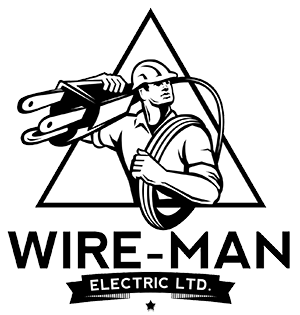When it comes to commercial spaces, safety is always a top priority. One critical aspect of safety that often goes unnoticed until it’s needed is emergency lighting. These systems are designed to provide illumination in the event of a power outage or other emergency, ensuring that everyone can safely evacuate or navigate the space. In this blog, we’ll explore the importance of emergency lighting systems in commercial properties, the different types available, and how to ensure they are properly maintained and functioning.
Why Emergency Lighting Systems Are Crucial
Emergency lighting systems play a vital role in the safety and security of commercial buildings. Here’s why they are indispensable:
- Ensuring Safe Evacuation: In the event of an emergency, such as a fire or power outage, panic can set in quickly. Emergency lighting provides the necessary illumination for occupants to safely find exits and evacuate the building, reducing the risk of injury or worse.
- Meeting Legal Requirements: Most commercial properties are required by law to have functioning emergency lighting systems. These requirements are outlined in local building codes and fire safety regulations. Non-compliance can result in hefty fines, legal consequences, and increased liability in the event of an emergency.
- Minimizing Business Disruption: In a less critical situation, such as a temporary power outage, emergency lighting allows for continued safe movement within the building, helping to minimize disruption to business operations until normal power is restored.
- Building Occupant Confidence: Employees, customers, and visitors are more likely to feel safe in a building that is equipped with visible, well-maintained emergency lighting. This confidence can contribute to a more secure and positive environment.
Different Types of Emergency Lighting
There are several types of emergency lighting systems designed to meet various needs within commercial spaces. Understanding these types can help you choose the right system for your property.
The Role of Emergency Lighting Systems in Commercial Spaces
Emergency lighting systems are crucial in commercial spaces, providing essential illumination during power outages or other emergencies. Various types of emergency lighting serve different purposes, ensuring the safety and security of the building’s occupants.
Understanding Escape Route Lighting
Escape route lighting is specifically designed to illuminate pathways such as hallways, stairwells, and exit doors, ensuring occupants can safely find their way out during an emergency. These systems typically include illuminated exit signs and directional lights that activate automatically during a power failure.
The Role of Standby Lighting in Business Continuity
Standby lighting is used to allow certain areas of the building to continue functioning during a power outage. This type of lighting is particularly useful in environments where halting operations would be dangerous or highly disruptive, such as in hospitals or industrial facilities. Standby lighting typically provides a lower level of illumination compared to regular lighting but is sufficient for safe operation.
Preventing Panic with Open Area (Anti-Panic) Lighting
Open area or anti-panic lighting is intended to prevent panic in large, open spaces by providing a basic level of illumination, allowing occupants to move calmly towards escape routes. These lights are usually installed in expansive areas like lobbies, large rooms, and open-plan offices, where sudden darkness could cause confusion and panic.
High-Risk Task Area Lighting: Ensuring Safety in Critical Zones
High-risk task area lighting is necessary in environments like laboratories or factories, where specific tasks involve high risks that require continuous lighting. These systems provide focused illumination in areas where dangerous equipment or sensitive processes are in use, ensuring these tasks can be safely completed or halted in a controlled manner during an emergency.
The Importance of Regular Maintenance and Testing
Each type of emergency lighting plays a vital role in maintaining safety and minimizing risk in commercial properties. Proper installation, regular maintenance, and routine testing are essential to ensure these systems function correctly when needed most. Ensuring the regular inspection and upkeep of these systems can prevent failures during critical moments.
Professional Inspection and Compliance
In addition to regular in-house checks, professional inspection and compliance are crucial for emergency lighting systems. Licensed electricians, like those at Wire-Man Electric Ltd, can provide thorough inspections and ensure that your systems meet all local safety codes and regulations, giving you peace of mind that your commercial property is well-prepared for any emergency.
Conclusion
Emergency lighting systems are a critical component of safety in any commercial space. They ensure that, in the event of an emergency, occupants can safely evacuate or continue essential operations. By understanding the different types of emergency lighting available and committing to regular maintenance and testing, you can ensure that your system will be ready to perform when it’s needed most.
At Wire-Man Electric Ltd, we specialize in the installation, maintenance, and testing of emergency lighting systems for commercial properties. Our experienced team is here to help you navigate the complexities of these systems and ensure your building is both safe and compliant. Contact us today to learn more about our services and how we can assist you in keeping your commercial space secure and well-lit, even in the most challenging situations.
